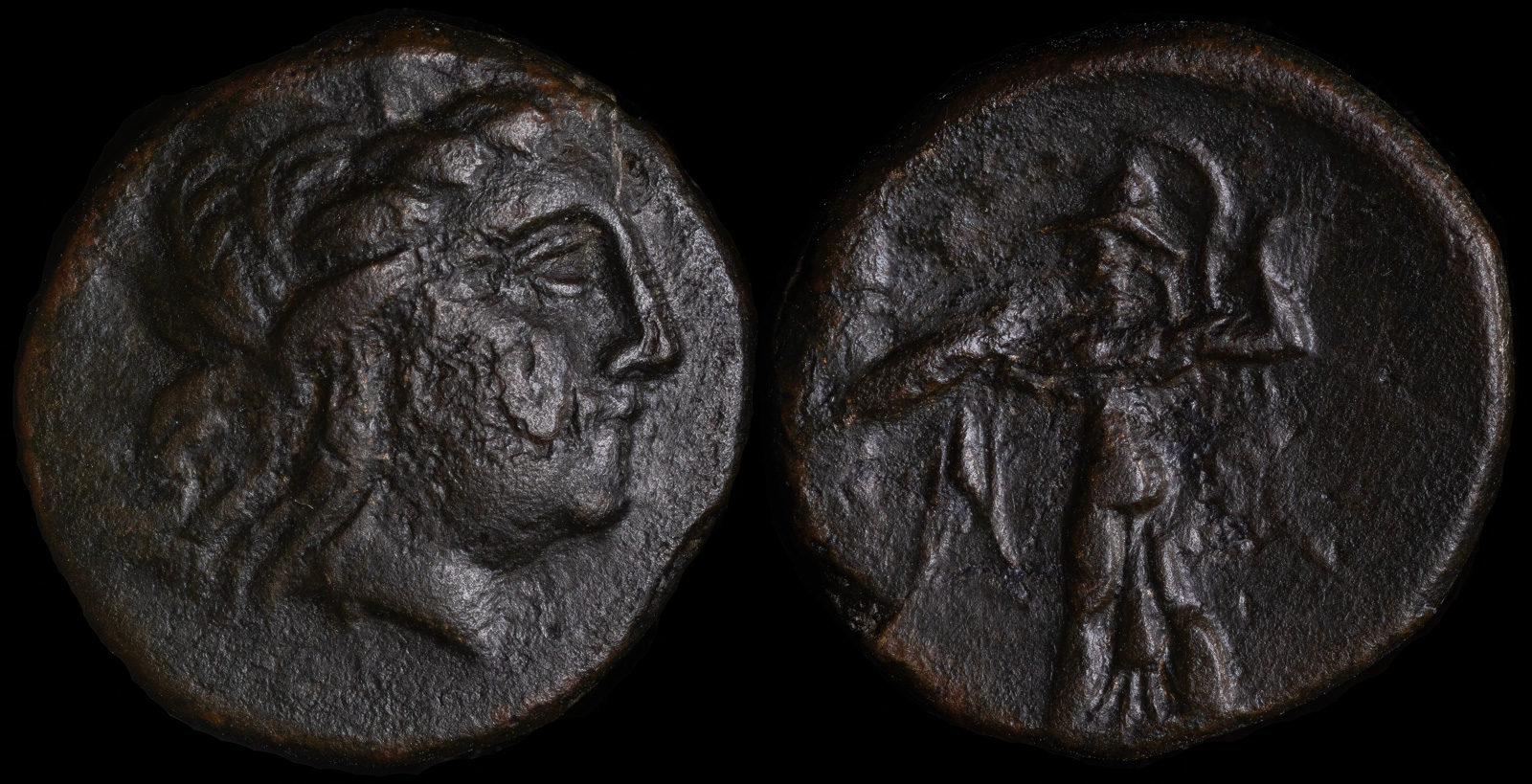
400-350 BCE
13.56mm 1.82g
Obverse: Head of Hera left, wearing stephane
Reverse: Large A; club below
BCD Peloponnesos 1057.1
Ex BCD Collection (not in LHS sale)
Ex CNG
Ex Marc Breitsprecher
Argos was perhaps the most potent rival to Sparta in the Peloponnese. A large and powerful city, it fought against Sparta for hundreds of years and for brief period assumed hegemony over the Peloponnese.
At other times Argos was neutral, notably when the Persians invaded. Here, their neutrality provoked the ire of the other Greeks, though they were also mostly neutral in disputes between Athens and Sparta.
Although Argos was never conquered by either Philip II or Alexander III, they did have to respect their will, such as honoring a peace treaty brokered by Philip II against Sparta. Among the Diadochi, only Pyrrhos attacked Argos. He was killed in the attempt. During Pausanias’ time there was a memorial to him.
Pausanias visited and spent a great deal of his Book 2 in Argos. He details many of their temples and several stories that occurred there. For example, during one bitter dispute between Argos and Sparta, Argos raised a thousand men to attack and put a man named Bryas in charge. They made a number of raids into Lakedaimon and on one occasion interrupted a bridal possession by snatching a young girl. When Bryas fell asleep, the girl blinded him.
The soldiers then chased after the girl, who fled back the procession. When the Argives demanded the girl, the commoners refused. There was then a battle where every single one of the soldiers were killed.

ca 280-260 BCE
Ae Dichalkon 16.3mm 3.2g
Obv: Head of Hera right wearing stephane inscribed ARGE
Rev: The Palladion standing left holding spear and shield
SNG Cop 57
Pictured on this coin is the Palladion, which was a small sacred statue that originally protected Troy. Legend had it that as long as they possessed the Palladion, the city could not be taken. Odysseus and Diomedes snuck into the city and stole the statue. Shortly thereafter, Troy fell.
After the Trojan War, one story has Diomedes returning with the Palladion to Argos, hence its depiction on the reverse.